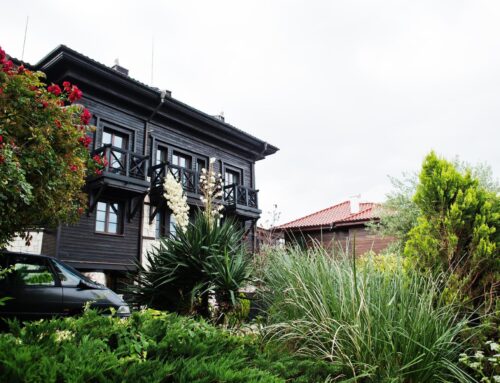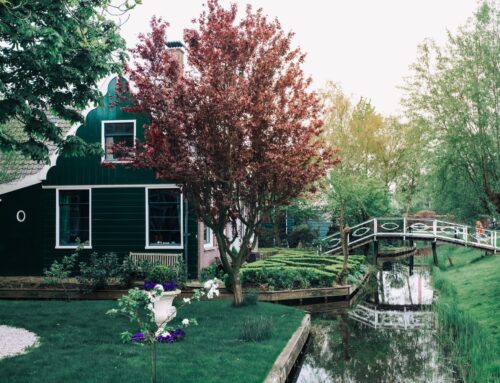In the quest for a beautiful yet manageable outdoor space, homeowners and landscaping enthusiasts are constantly on the lookout for smart tools and techniques to simplify efficient landscape maintenance. With the advancement of technology and innovative landscaping methods, maintaining a lush and sustainable yard has become more efficient and less time-consuming. This article explores some of the most cutting-edge approaches to low-maintenance landscaping and seasonal strategies that ensure your garden remains vibrant all year round, with minimal effort required.
Key Takeaways
- Innovative landscaping techniques such as xeriscaping and smart irrigation systems can significantly reduce maintenance efforts while promoting sustainability.
- Seasonal strategies, including springtime lawn care and adapting garden maintenance to changing seasons, are crucial for stress-free landscape upkeep.
- Advanced tools and bioengineered turf are transforming traditional lawn care, offering homeowners futuristic solutions for a low-maintenance and eco-friendly outdoor space.
Innovative Approaches to Low-Maintenance Landscaping

Xeriscaping: Embracing Drought-Resistant Ecosystems
Embrace the art of xeriscaping to transform your yard into a low-maintenance oasis that thrives even in dry conditions. Xeriscaping is not just about saving water; it’s about creating a sustainable and visually appealing landscape that requires minimal upkeep. Here’s how you can get started:
- Select the right plants: Opt for native grasses, succulents, and perennials that are drought-resistant and well-adapted to your local climate.
- Design with conservation in mind: Plan your garden layout to minimize water usage, incorporating elements like mulch and proper soil preparation to retain moisture.
- Embrace biodiversity: Introduce a variety of plants to support local wildlife, from pollinators like butterflies to birds that add life and song to your garden.
By following these steps, you’ll create a garden that not only conserves water but also becomes a self-sustaining ecosystem. A xeriscaped garden is a smart choice for those looking to reduce their environmental footprint while enjoying a beautiful outdoor space.
Smart Irrigation Systems: Technology-Driven Water Conservation
Imagine a garden that knows when to water itself. Smart irrigation systems are revolutionizing the way we think about efficient landscape maintenance. These systems use advanced sensors to monitor soil moisture and environmental conditions, tailoring watering schedules to the precise needs of your plants.
Here’s how you can leverage smart irrigation for your landscape:
- Install sensors that gauge soil moisture and temperature.
- Connect to weather forecasts to anticipate rain and adjust watering accordingly.
- Utilize a mobile app to manage your irrigation system from anywhere.
With these steps, you’re not just conserving water; you’re also ensuring that every drop is used as effectively as possible. Smart irrigation is a testament to how technology can lead to more sustainable living, especially in regions where water is a precious commodity.
Bioengineered Turf: The Future of Sustainable Lawns
Imagine stepping onto a lawn that’s not only lush and green but also a marvel of biotechnology. Bioengineered turf is revolutionizing the way we think about lawn care, offering a sustainable and low-maintenance alternative to traditional grass. These advanced grass varieties are designed to thrive with less water, fewer fertilizers, and no need for pesticides.
Key benefits of bioengineered turf include:
- Reduced water consumption
- Minimal fertilizer requirements
- Natural resistance to pests and diseases
This innovative approach to landscaping not only simplifies maintenance but also plays a crucial role in environmental conservation. By reducing water waste and chemical runoff, bioengineered lawns contribute to a healthier ecosystem. As this technology continues to develop, it holds the potential to transform our outdoor spaces into eco-friendly havens that support biodiversity and promote soil health. Embrace the change and be part of the movement towards a more sustainable future in efficient landscape maintenance.
Seasonal Strategies for Stress-Free Landscape Upkeep

Springtime Lawn Care: Revitalizing Your Green Space
As the season of renewal unfolds, it’s time to breathe new life into your lawn. Begin by clearing away the remnants of winter; rake out fallen leaves and debris to prevent mold and diseases. This not only cleans your yard but also allows sunlight and air to reach the grass roots more effectively.
Next, assess your lawn’s health. Look for signs of thinning or bare patches that might need reseeding. Early spring is the ideal time for this task, as the soil temperature is just right for seed germination. Don’t forget to apply a balanced fertilizer to provide essential nutrients and encourage robust growth.
Lastly, set the stage for a season of lush greenery by sharpening your mower blades. A clean cut is crucial for the health of your grass, reducing the risk of disease and promoting a thicker turf. With these steps, your lawn will be well on its way to becoming a vibrant outdoor sanctuary.
Adapting Garden Maintenance to the Seasons
As the seasons change, so should your approach to garden maintenance. In spring, focus on clearing away the winter’s debris and preparing your garden beds for new growth. This includes removing any dead vegetation and pruning plants to encourage healthy development.
During summer, adapt your watering schedule to the needs of your plants, aiming for deep, infrequent watering that encourages strong root systems. Remember to check the soil moisture before watering; it should be dry to a depth of 1-2 inches.
As autumn arrives, it’s time to prepare your garden for the colder months. This can involve mulching to protect plant roots, planting bulbs for spring blooms, and clearing fallen leaves.
Finally, winter is a period of rest for your garden, but not for you. Use this time to plan for the upcoming year, repair garden tools, and if necessary, provide protective coverings for sensitive plants.
By tailoring your garden care to the rhythm of the seasons, you’ll ensure a vibrant and healthy landscape all year round.
Efficient Tools for Year-Round Efficient Landscape Management
To keep your lawn and landscape in top condition throughout the year, it’s essential to have the right tools at your disposal. An edger and trimmer are indispensable for maintaining crisp, clean edges along walkways, beds, and other landscape features. These tools help in creating a polished look that defines your green space.
In addition to edging, consider a comprehensive toolkit that includes a lawn mower for regular cutting, a leaf blower for quick cleanups, and a compost spreader to nourish your soil. Aeration tools are also crucial for promoting healthy root growth. By investing in these must-have items, you’ll be well-equipped to handle the varying demands of each season with ease and efficiency.
Lastly, don’t overlook the importance of proper storage and maintenance of your tools. Keeping them clean, sharp, and in good working order will extend their lifespan and ensure they’re ready when you need them. With a well-curated selection of tools and a commitment to regular care, your landscape can thrive year-round with minimal effort.
Conclusion
In the quest for a pristine and sustainable outdoor space, homeowners and landscaping enthusiasts have a wealth of smart tools and techniques at their disposal. From the water-wise principles of xeriscaping to the convenience of smart irrigation systems, the efficient landscape maintenance industry has evolved to meet the demands of modern living. Innovations like bioengineered lawns and vertical gardens not only cater to aesthetic and environmental concerns but also offer practical solutions for space and resource management. As we embrace these advancements, it’s clear that the future of landscaping is geared towards creating low-maintenance, high-efficiency gardens that allow us to enjoy the beauty of nature without the backbreaking labor. Whether you’re a busy homeowner or a dedicated green thumb, the tools and techniques discussed provide a roadmap to a lush, eco-friendly, and manageable landscape.





